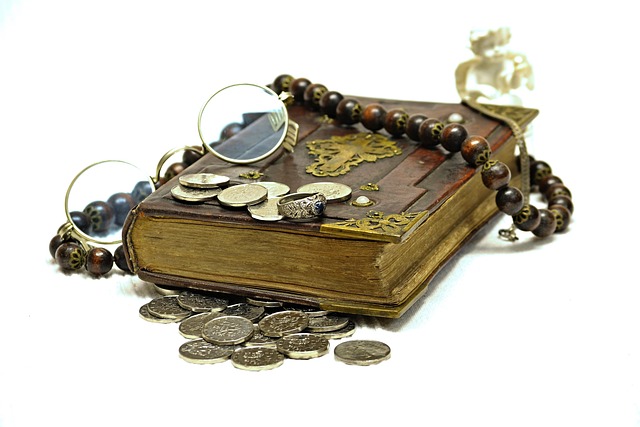In the field of translation, especially for UK art catalogs and exhibition brochures, UK Art Catalogs and Exhibition Brochures Translation Services are paramount. Direct translations often miss or alter cultural nuances, idioms, and artistic metaphors crucial to the original tone and intent. Professional services employ translators with deep language and culture expertise, preserving aesthetic connotations while adapting content for global audiences. This ensures UK art remains accessible and appreciated worldwide, highlighting the significance of these specialized translation services.
In the realm of UK art catalogs and exhibition brochures, accurate translation goes beyond words. Maintaining original tone is a delicate dance, especially when navigating cultural nuances that shape artistic expression. This article delves into the intricate process, exploring challenges from direct translation hurdles to the pivotal role of native speakers. We’ll uncover expert techniques, analyze real-world case studies, and discuss the evolving landscape with AI, all while emphasizing the paramount importance of quality assurance for authentic UK art catalog translation services.
- Understanding Cultural Nuance: The Cornerstone of Accurate Translation
- UK Art Catalogs and Exhibition Brochures: A Glimpse into Their Unique Language
- Challenges in Preserving Tone: When Words Don't Translate Directly
- Role of Native Speakers: Capturing the Essence of Art Language
- Techniques for Maintaining Original Tone: Tips from Translation Experts
- Case Study: Successful Tone Preservation in a Real-World Example
- The Importance of Quality Assurance Checks for Artistic Translations
- Future Trends: AI and Its Impact on UK Art Catalog Translation Services
Understanding Cultural Nuance: The Cornerstone of Accurate Translation

In the realm of translation, especially for UK art catalogs and exhibition brochures, understanding cultural nuance is paramount to preserving the original tone and intent. Each language carries unique idioms, expressions, and metaphors that can significantly alter meaning when directly translated. For instance, an art term that holds a specific aesthetic connotation in English might not convey the same depth or subtle differences in another language. Accurate translators must be adept at navigating these cultural landscapes to avoid losing the essence of the text.
This is particularly crucial for UK-based art publications aiming to reach international audiences. Art catalogs and exhibition brochures often feature intricate descriptions, historical references, and artistic concepts that rely heavily on cultural context. Skilled translators must not only grasp the language’s syntax but also its cultural fabric to ensure the translated material resonates with readers from diverse backgrounds. This meticulous approach guarantees that UK art publications maintain their integrity and allure when distributed globally.
UK Art Catalogs and Exhibition Brochures: A Glimpse into Their Unique Language

UK art catalogs and exhibition brochures are renowned for their distinctive language and style, which play a pivotal role in conveying the essence of artistic creations. These publications often employ poetic descriptions, evocative imagery, and nuanced terminology to capture the emotional impact of artworks. Translation services for such materials require a delicate balance between preserving the original tone and ensuring cultural relevance.
When translating UK art catalogs and exhibition brochures, professional translators must understand the subtle nuances of language used in the art world. This involves not just converting words from one language to another but also interpreting the artistic vision and intent behind each description. Specialized translation services cater to this unique challenge by engaging translators who possess a deep appreciation for art, fostering an environment where the original tone can be meticulously maintained while adapting content for global audiences.
Challenges in Preserving Tone: When Words Don't Translate Directly

Maintaining original tone in translations is a significant challenge, especially for creative content like UK art catalogs and exhibition brochures. These documents rely heavily on nuanced language, cultural references, and specific terminology that may not have direct equivalents in other languages. For instance, describing an artwork’s emotional resonance or evoking the atmosphere of a gallery requires precise wording that captures both the literal and figurative meanings.
Translation services face the daunting task of preserving this delicate balance while conveying the message accurately. A direct translation often results in loss of intent and tone, leading to a disconnect between the original text and its translated version. Professionals in UK art catalog and exhibition brochure translation must be adept at using idiomatic expressions, poetic devices, and creative language to ensure that the essence of the original work is retained. This meticulous approach ensures that international audiences can appreciate and understand not just the facts presented but also the artistic vision behind each piece.
Role of Native Speakers: Capturing the Essence of Art Language

The role of native speakers in translation is indispensable, especially for documents like UK art catalogs and exhibition brochures. These texts often employ artistic language, requiring a deep understanding of both the source and target culture to convey their nuances accurately. Native speakers bring a unique perspective by grasping subtleties that non-native translators might miss, ensuring the translated content resonates authentically with the intended audience.
In the context of UK art catalogs and exhibition brochures, native speakers can capture the essence of artistic expression, from poetic descriptions to metaphorical language, making sure the final translation not only makes sense but also evokes the same emotional response as the original. This level of cultural proficiency is essential for maintaining the integrity and beauty of the art described, ultimately enhancing the reader’s experience in a foreign language.
Techniques for Maintaining Original Tone: Tips from Translation Experts

Maintaining original tone in translations, especially for documents like UK Art Catalogs and Exhibition Brochures, is an art that experts have perfected over time. These professionals employ several techniques to ensure the translated content captures the essence of the original text while catering to the target audience.
One key tip is to understand not just the language but also the cultural nuances. Art and exhibition materials often rely on specific references, idioms, or even subtle humor that might not translate directly. Experts conduct thorough research to bridge this gap, ensuring the tone remains consistent with the original intent. They also advocate for close collaboration between translators and the creative team, allowing for a more seamless integration of style and voice throughout the document.
Case Study: Successful Tone Preservation in a Real-World Example

In the realm of UK art catalogs and exhibition brochures, maintaining original tone is paramount for effective communication. Consider a recent case study involving a renowned contemporary art gallery in London. The gallery, known for its avant-garde exhibitions, needed to translate their annual catalog into multiple languages to reach a global audience. They partnered with specialized translation services that understood the subtleties of artistic expression and cultural nuances.
The translators not only converted the text but also preserved the original tone, capturing the essence of each piece’s narrative. They achieved this by closely collaborating with the gallery’s curatorial team, attending brainstorming sessions, and immersing themselves in the artistic vision. The result was a catalog that resonated just as strongly in foreign languages, ensuring that art enthusiasts worldwide could appreciate the exhibits’ unique voice and atmosphere, much like their local counterparts.
The Importance of Quality Assurance Checks for Artistic Translations

Maintaining the original tone in translations is paramount, especially for artistic works like UK art catalogs and exhibition brochures. These documents often convey nuanced meanings, cultural references, and specific artistic terminology that demand precision and sensitivity during translation. Quality Assurance (QA) checks play a pivotal role in ensuring these aspects are preserved.
Rigorous QA processes involve meticulous proofreading by expert translators who not only verify factual accuracy but also assess the tonal consistency with the original text. They inspect the translated material for any potential loss or distortion of artistic intent, cultural nuances, or subtle references that might be missed during automated translation tools. This human oversight is crucial in capturing the essence and beauty inherent in UK art catalogs and exhibition brochures.
Future Trends: AI and Its Impact on UK Art Catalog Translation Services

The future of translation services in the art industry, particularly in the UK, is poised for a significant transformation with the advent of Artificial Intelligence (AI). As technology advances, AI is set to play a pivotal role in enhancing and streamlining UK art catalogs and exhibition brochure translation services. One of the key trends is the development of sophisticated machine translation tools that can accurately interpret artistic content, including specialized terminology from various art fields. These AI-powered solutions have the potential to reduce turnaround times and costs, making high-quality translations more accessible for art organizations across the UK.
Additionally, AI will enable advanced language processing capabilities, allowing translators to capture the nuances and cultural subtleties inherent in artistic expressions. This is crucial for ensuring that translated materials accurately convey the intended artistic message while adhering to linguistic excellence. With AI, translation services can offer personalized, context-aware interpretations, catering to a diverse range of art catalog and brochure content, from historical exhibitions to contemporary installations.
In navigating the intricate world of translating UK art catalogs and exhibition brochures, understanding cultural nuances is paramount. The article has explored various facets, from recognizing the unique language of artistic discourse to addressing challenges in tone preservation and leveraging the expertise of native speakers. As AI continues to evolve, quality assurance checks remain indispensable for ensuring accurate and evocative translations that do justice to the original essence. By embracing these techniques and staying abreast of technological advancements, UK art catalog translation services can preserve the artistic integrity and beauty inherent in their subject matter, making them accessible to a global audience.



